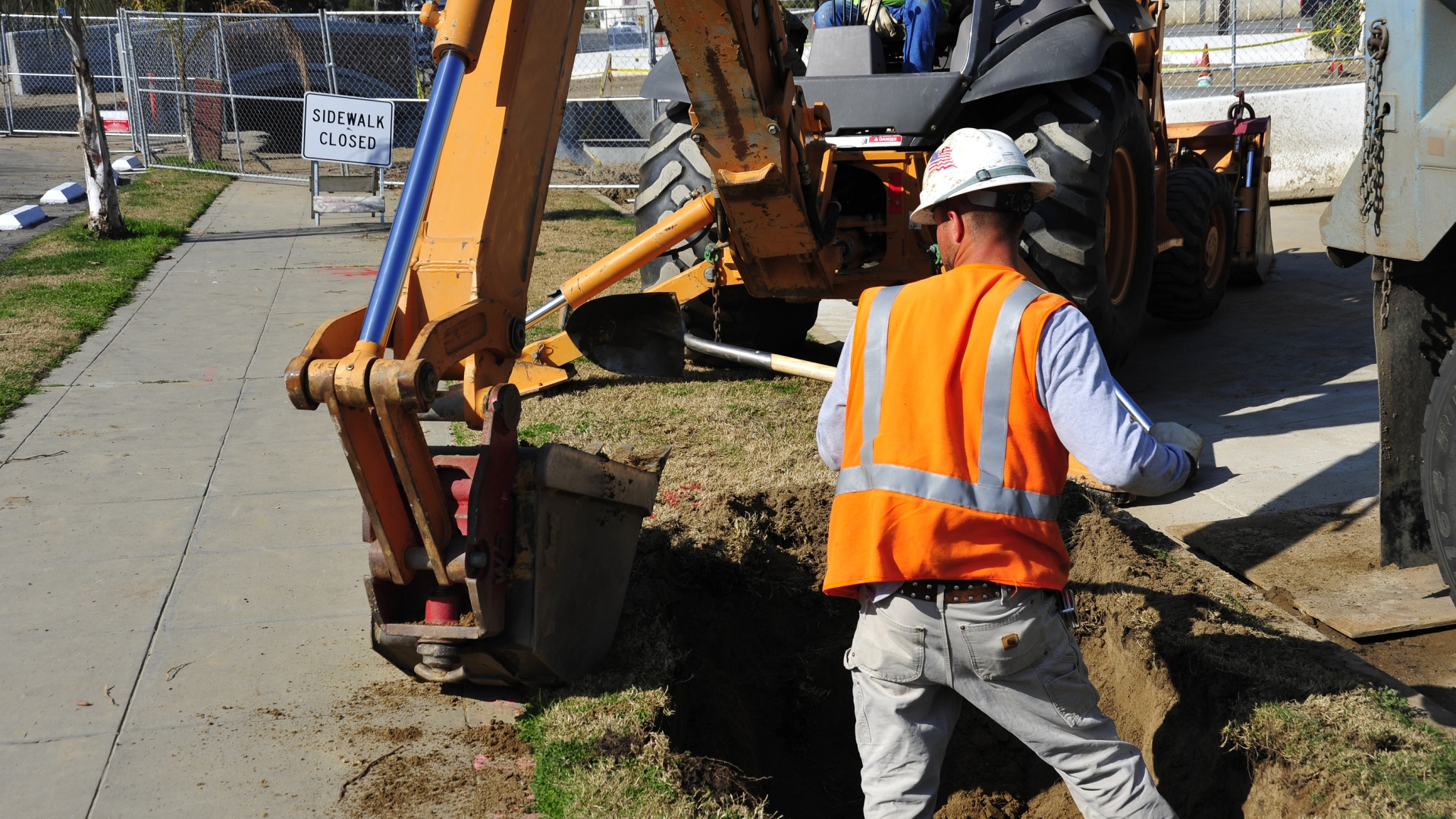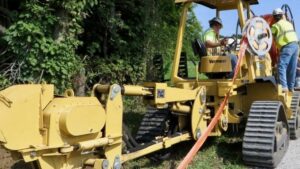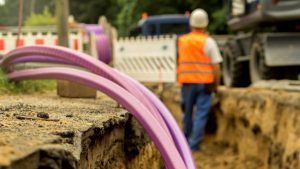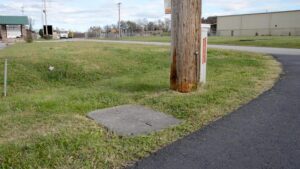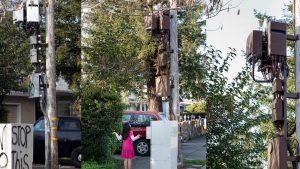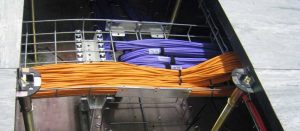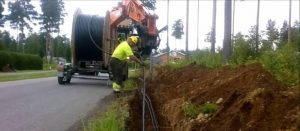Excavating without checking for underground services is extremely unsafe. Legislation exists to provide a level of safety for the individual and the assets.
Should excavation be undertaken near underground services without the appropriate authority or approved processes, or if an individual damages or interferes with the assets legislation provides severe financial penalties. Before commencing any excavation work, reference shall be made to the details or plans of the utility or private services in the proposed excavation area.
The location of underground services provided by a service or utility provider may not be accurate for many reasons. As complete accuracy cannot be guaranteed, the position of underground services must be proven by hand excavation or equivalent safe, non-destructive excavation technique.
A pipe or cable locator may be used to positively locate any pipes, mains or cables in lieu of using any mechanical equipment. Hand tools providing an appropriate level of safety, or equivalent non-destructive excavation techniques, must be used to prove the location of pipes, mains or cables buried in the ground where a locator is not utilized.
These services must be located prior to the use of any excavation equipment. (Note: any damage to underground services, no matter how minor, must be reported. If not, the service may deteriorate and lead to serious and costly damage at a later date.)
In the case of emergency repairs, as much information as possible should be sought by visual inspection before digging. The individual should prove, by hand excavation or other approved technique, the precise location of all existing underground services prior to digging.
Consideration should also be given to an on-site meeting with utility providers in order to locate the asset.
A site meeting with the service provider/s may be required to determine location/s and procedures for dealing with services within the scope of work. This issue should be addressed during initial project development to provide time to establish a regime to manage any risks.
Safety
Individuals must always work safely and proceed with caution, applying the safety rules applicable to the particular operation being carried out. Consideration must be given to the safety of individuals and the community, especially to provide adequate safety barriers and safe pedestrian access around the work site.
Additionally, personal protective equipment applicable to the particular operation must be used.
Telecommunications Cables
Telecommunications cables developed for underground installations have changed in line with technology requirements. Paired Cables (multi-wire) Older cables still in service consist of paper insulated copper conductors contained within a lead sheath.
Cable sizes range from one pair used to provide service to individual customers to cables containing many hundreds of pairs (typically up to 2,400 pairs or larger). Larger cables (over 100 pairs) are often pressurized with dry air and contain alarm systems.
Further development of cables saw paper insulation and plastic cable sheaths introduced into the telecommunications network. The copper paired cable network is divided into three categories:
- Main cable network consisting of cables containing 100 to 2700 pairs
- Distribution cable networks consisting of cables from 10 to 100 pairs
- Lead-in cables, usually two pairs for residential areas but larger cables are provided to industrial/commercial sites.
Distribution and lead-in cables may be paper insulated, lead sheathed, plastic insulated, plastic sheathed air cored cables or plastic insulated, plastic sheathed, grease filled cable.
Co-axial Cables
Co-axial cables may be either lead or plastic sheathed. Larger co-axial cables may contain four or more co-axial “tubes” plus copper pairs. These cables have the ability to carry very large volumes of circuits including television signals.
With the emergence of Cable TV, four additional co-axial cables have been introduced to the telecommunications network. Solid core 0.5 inch and 0.75 inch co-axial cables are provided for carrying CATV signals along suburban streets, while flexible co-axial cables (Series 6 and 11 cables) are used as lead-in cables to customers’ premises.
Optical Fibre Cables
Optical fibre cables have many applications. They are used to provide circuits to pad mounted multiplexing equipment serving approximately 500 customers each. They are used as circuits linking exchange areas, as intrastate and interstate links and more recently to carry Cable TV circuits to distribution points from which co-axial cables radiate.
Optical fibre cables are relatively small diameter cables but have a very large circuit capacity.
Other Cables
Multiplexing equipment, CATV systems and pay phones require power cable feeds. These cables are identifiable by electricity industry standards. In some cases, cathodic protection systems cables and earth wires may exist with equipment requiring power cable feeds.
Cable Installation
Cables are designed for installation in pipe or direct burial in a suitable stone-free backfill. They are not designed to resist the impact of hand or machine tools or to be left unsupported over any great distance.
Where agreement is reached between service owners, cables may share trenches with other utility assets. Power cables are often found in “shared trenches”. Over the years, there have been many changes to installation methods and materials used for telecommunications cables. Cable may be buried directly or installed in one or more of the following:
- White PVC pipe – 10 mm to 100 mm internal diameter
- Fibro asbestos cement (FAC) pipes and ducting
- Galvanised iron (GI) pipe – various diameters
Large numbers of conduits (100 mm) may be encased in concrete to provide added support and security.
Depth of Cover
Cables installed in shared trenches and in private property are usually laid at a depth of 300 mm or more. Cables in public footways are usually laid at 450 mm, and under roadways at 600 mm. These measurements can vary according to surface level changes over time or where physical obstructions prevent achieving these depths.
Alignments
The majority of telecommunication services at joint locations are housed in pits or manholes. However, the line between these may not be straight if obstructions were encountered during installation. Direct buried cable in rural areas may be identified by pits/manholes and marker posts. However, it cannot be assumed that a cable follows a direct path between these items.
Cable Records
Cable records indicating the type of service installed are maintained by telecommunication carriers. However, the accuracy of information can be confirmed only by either electrical location methods (metal content cables) or by hand excavation (non-metallic optical fibre cables). Cable depths are not recorded.

